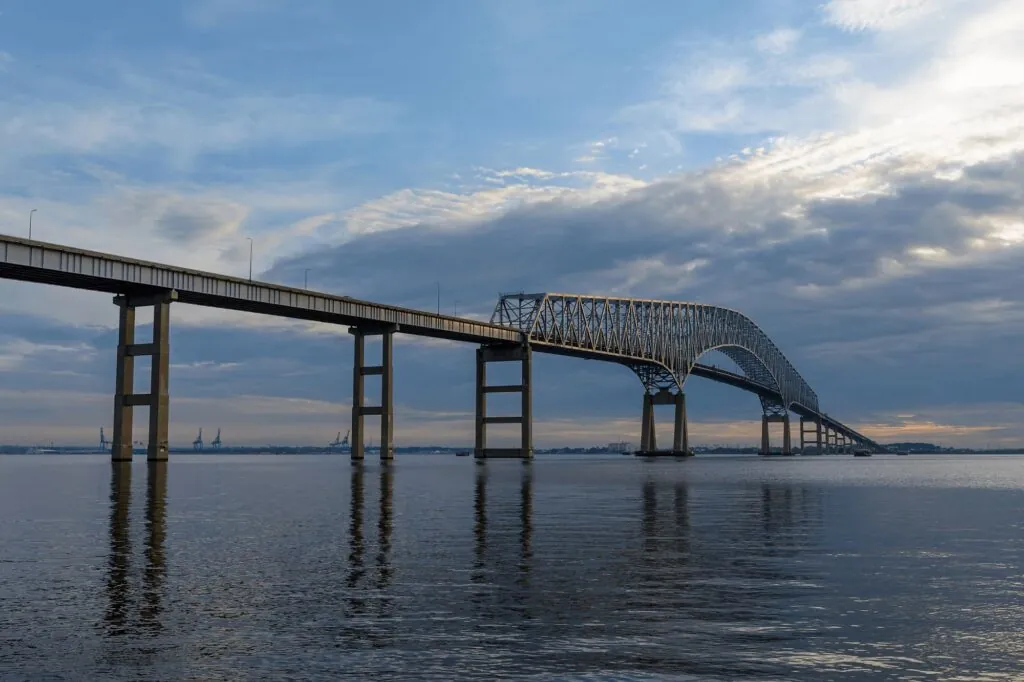Philadelphia Ladder Falls Lawyer
Construction work is one of the most dangerous occupations, and ladder-related accidents are a significant contributor to workplace injuries and fatalities. Every year, thousands of construction workers suffer serious injuries due to falls from defective, unstable, or improperly used ladders. Despite strict OSHA regulations designed to minimize these risks, ladder safety violations remain one of the most common causes of workplace injuries. Our Philadelphia ladder falls lawyer is here to provide the legal support you need.
At Fulginiti Law, we understand how devastating a ladder fall injury can be—not just physically, but also financially and emotionally. Medical bills, lost wages, and the inability to work can put immense stress on injured workers and their families. If your ladder fall was caused by unsafe working conditions, a defective ladder, or employer negligence, you may have the right to pursue compensation.
Our construction accident attorneys are committed to holding negligent parties accountable and securing the compensation you deserve. Whether your accident was caused by an OSHA violation, defective equipment, or employer negligence, we will fight for your rights every step of the way.
Why Choose Fulginiti Law for Your Ladder Fall Case?
At Fulginiti Law, we focus exclusively on construction site injury claims and have extensive experience representing workers who have been injured in ladder falls and other job site accidents. When you choose our firm, you get:
Specialized Knowledge of Construction Accidents
Unlike general personal injury firms, we focus specifically on construction accident litigation. We have an in-depth understanding of OSHA ladder regulations, job site safety standards, and employer responsibilities, allowing us to build the strongest possible case for injured workers.
Proven Track Record of Winning Cases
We have successfully obtained millions of dollars in compensation for injured workers and their families. Our attorneys aggressively pursue claims against negligent employers, contractors, property owners, and ladder manufacturers to ensure our clients receive full compensation.
Aggressive Representation Against Insurance Companies
Insurance companies often try to lowball injury victims, offering settlements far below what victims deserve. We fight back against unfair settlement offers, ensuring that our clients get the maximum compensation possible.
No Upfront Costs – We Only Get Paid If You Win
We work on a contingency fee basis, which means there are no out-of-pocket costs for you. We only get paid when we win your case.
If you or a loved one has suffered a ladder fall injury, don’t wait to seek legal help. Our experienced team is ready to fight for your rights and ensure that you receive the compensation you need to recover.
Common Causes of Ladder Falls on Construction Sites
Ladders are one of the most commonly used tools on construction sites, but when safety protocols are ignored, they become one of the most dangerous. The following are the most common causes of ladder-related falls in construction:
Unstable or Defective Ladders
Ladders that are damaged, structurally weak, or poorly maintained can collapse unexpectedly, causing serious falls. Employers are legally required to inspect ladders for defects and remove unsafe equipment from use.
Failure to Secure Ladders Properly
Ladders must be placed on stable, level ground and secured with stabilizing mechanisms such as tie-offs or locking mechanisms. If a ladder is not properly secured, it can shift or tip over, causing a dangerous fall.
Lack of Fall Protection
OSHA requires fall protection systems when workers use ladders above a certain height. Many employers fail to provide harnesses, guardrails, or safety nets, putting workers at unnecessary risk.
Overloading and Improper Ladder Use
Every ladder has a weight limit. When workers exceed that limit—by carrying heavy tools, materials, or multiple workers using the ladder at once—the structure can become unstable and lead to a fall.
Lack of Proper Training
Many workers are never properly trained on how to safely use ladders, leading to incorrect positioning, improper climbing techniques, or unsafe weight distribution. Employers are required by OSHA regulations to provide adequate ladder safety training.
Negligent Supervision & Failure to Enforce Safety Regulations
Supervisors and contractors must enforce ladder safety protocols on job sites. If they fail to monitor workers, allow unsafe practices, or ignore OSHA regulations, they can be held liable for workers’ injuries.
If your ladder fall was caused by unsafe working conditions, equipment defects, or employer negligence, you may be entitled to compensation. Our attorneys at Fulginiti Law will investigate the details of your accident and fight for your full legal rights.
Common Injuries from Ladder Falls
Ladder falls can cause serious, life-threatening injuries, often requiring extensive medical care and long-term recovery.
- Traumatic Brain Injuries (TBIs)
Even with a hard hat, falls can lead to concussions or severe brain trauma. Symptoms include memory loss, dizziness, headaches, and impaired speech. TBIs may cause long-term cognitive issues or permanent disability. - Spinal Cord Injuries & Paralysis
Falls can result in herniated discs, fractured vertebrae, or complete spinal damage, sometimes leading to permanent paralysis and loss of mobility. These injuries often require surgery and extensive rehabilitation. - Broken Bones & Fractures
Commonly affect wrists, arms, legs, and ribs, often requiring surgery, immobilization, and months of recovery. - Internal Injuries & Organ Damage
Blunt force trauma can cause internal bleeding, punctured lungs, and damaged organs, which may require emergency surgery and can be life-threatening. - Soft Tissue Injuries
Falls often cause torn ligaments, muscle damage, and deep bruising, leading to chronic pain and mobility issues. - Amputations & Crush Injuries
Falling ladders or heavy equipment can result in severe nerve damage, crushed limbs, or amputations, causing permanent disability and emotional distress. - Fatal Ladder Falls (Wrongful Death)
Ladder falls are a leading cause of workplace fatalities. Families may file a wrongful death claim for funeral costs, lost income, and emotional suffering.
If you or a loved one suffered a ladder fall injury, contact Fulginiti Law for a free case review.
Who is Liable for a Ladder Fall Injury?
Determining who is responsible for a ladder fall injury depends on the circumstances of the accident. Several parties may be held liable, including:
- Employers
Employers have a legal duty to provide a safe work environment. If they fail to provide proper training, fail to conduct safety inspections, or do not enforce OSHA regulations, they can be held responsible for workers’ injuries. - General Contractors & Site Supervisors
Site managers and general contractors are responsible for ensuring that all workers follow safety protocols. If they ignore safety violations, fail to secure ladders, or do not enforce fall protection standards, they can be held accountable. - Property Owners
Property owners may be liable if they knew about hazardous conditions on their property but failed to correct them, leading to a ladder fall injury. - Ladder Manufacturers & Suppliers
If a ladder is defective or poorly designed, the manufacturer or distributor may be responsible under product liability laws. This includes ladders that collapse, have faulty locking mechanisms, or contain manufacturing defects. - Subcontractors & Third Parties
If a third-party contractor or subcontractor caused your accident (such as by placing a ladder improperly or overloading it), they can be held responsible for damages.
At Fulginiti Law, we will thoroughly investigate your case and determine who is liable for your injuries.
How to File a Claim After a Ladder Fall Accident
Filing a legal claim after a ladder fall can help injured workers recover compensation for their injuries. Here’s what you should do:
- Seek Immediate Medical Attention
Your health is the top priority. Even if you think your injuries are minor, get checked by a doctor. Medical documentation will be key evidence in your case. - Report the Accident to Your Employer
Make sure to file an official accident report with your employer or site supervisor as soon as possible. - Gather Evidence
- Take photos and videos of the accident scene.
- Collect witness statements from coworkers.
- Keep copies of medical records and accident reports.
- Contact a Construction Accident Lawyer
Before speaking with insurance adjusters, talk to an experienced construction accident attorney to protect your rights. - File a Workers’ Compensation or Personal Injury Claim
Depending on your case, you may be able to file:- A workers’ compensation claim for benefits.
- A personal injury lawsuit against a third party.
At Fulginiti Law, our Philadelphia ladder falls lawyer handles all aspects of your claim, from investigating the accident to negotiating with insurance companies.
Compensation for Ladder Fall Victims
Injured construction workers may be entitled to compensation for:
- Medical Expenses – Coverage for emergency care, hospitalization, surgeries, rehabilitation, and ongoing treatment.
- Lost Wages – Compensation for time missed from work due to injury.
- Pain and Suffering – Physical pain, emotional distress, and reduced quality of life.
- Permanent Disability – If your injury results in long-term impairment, you may receive compensation for future lost earnings.
- Wrongful Death Benefits – If a loved one dies from a ladder fall, surviving family members may file a wrongful death claim.
Our attorneys work to maximize your settlement and fight for every dollar you deserve.
Frequently Asked Questions (FAQs) About Ladder Fall Injuries
What should I do immediately after a ladder fall accident?
Seek medical attention right away, even if injuries seem minor. Report the accident to your employer and ensure an official incident report is filed. Document the scene with photos, gather witness statements, and contact an experienced Philadelphia ladder falls lawyer before speaking with insurance companies.
Who is responsible for a ladder fall injury on a construction site?
Liability depends on the cause of the accident. Employers may be responsible if they failed to enforce OSHA safety regulations or provide proper training. Contractors and site supervisors can be held accountable for unsafe work conditions. Ladder manufacturers may be liable if a defective ladder caused the fall. Property owners and third-party subcontractors may also share responsibility.
Can I file a lawsuit if I was injured in a ladder fall at work?
Yes, if negligence was involved. While workers’ compensation may cover medical expenses and lost wages, a personal injury lawsuit can provide additional compensation if a third party, such as a contractor or equipment manufacturer, was at fault. An attorney can evaluate your case and determine the best legal path.
What kind of compensation can I receive for my ladder fall injury?
Compensation may cover medical expenses, rehabilitation costs, lost wages, future lost earnings, pain and suffering, and long-term disability. In wrongful death cases, families may seek compensation for funeral expenses, lost financial support, and emotional suffering.
How long do I have to file a claim after a ladder fall?
Time limits vary by state. Workers’ compensation claims typically have strict deadlines, while personal injury lawsuits may have a statute of limitations of one to several years. Consulting a Philadelphia ladder falls lawyer as soon as possible ensures you meet all legal deadlines and maximize your claim.
Contact Fulginiti Law Today
If you or a loved one has suffered a ladder fall injury, don’t wait to take action. Contact Fulginiti Law for a free case evaluation.
We only get paid if we win your case. Let our Philadelphia ladder falls lawyer fight for your rights and secure the compensation you deserve. Call today!



